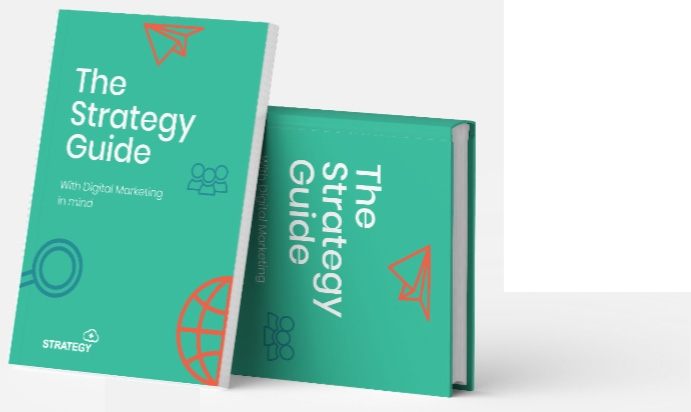
Introduction
You’ve no doubt heard the word ‘strategy’ used hundreds, if not thousands, of times. In most cases, it’s a word that gets thrown around the workplace with no real thought, and on many occasions can be used in the wrong context.
Marketing professionals may even run ‘Strategy’ sessions and not fully grasp the purpose, just a few weeks or months down the line all is forgotten.
Often referred to as a business’s ‘game plan’, the research surrounding the strategy process has long been one of contention, with professionals still unsure of the best way to create and implement the method in their own organisation.
Although it’s been our namesake since 1997, I’m sure we too have been guilty of not abiding by strategy ‘best practices’, purely because we have been sidetracked by more short-term pressures e.g. keeping clients happy!
Well, this guide has been created so you can put your best foot forward when it comes to planning out your next strategy in 2021.
From reporting to budgeting, objectives to goal setting, this in-depth guide will give anyone,
from a small business owner to a marketing director at a medium-sized organisation, a clear idea of what is needed to create an effective strategy going forward.
With helpful guidelines top tips and examples along the way, to execute consistently.
There is not one blueprint for a strategy, some professionals (Martin Reeves on Youtube) even say there should be a ‘strategy for strategies’, but that can make your head hurt.
It is true though. A strategy will certainly differ depending on lots of factors, such as the fragility of your industry, the influence you have within it, your resources etc.
This guide will provide examples and guidance from the perspective of a Digital Marketing department, rather than a company as a whole.
Just so it makes things easier when providing consistent examples throughout.
Search Interest
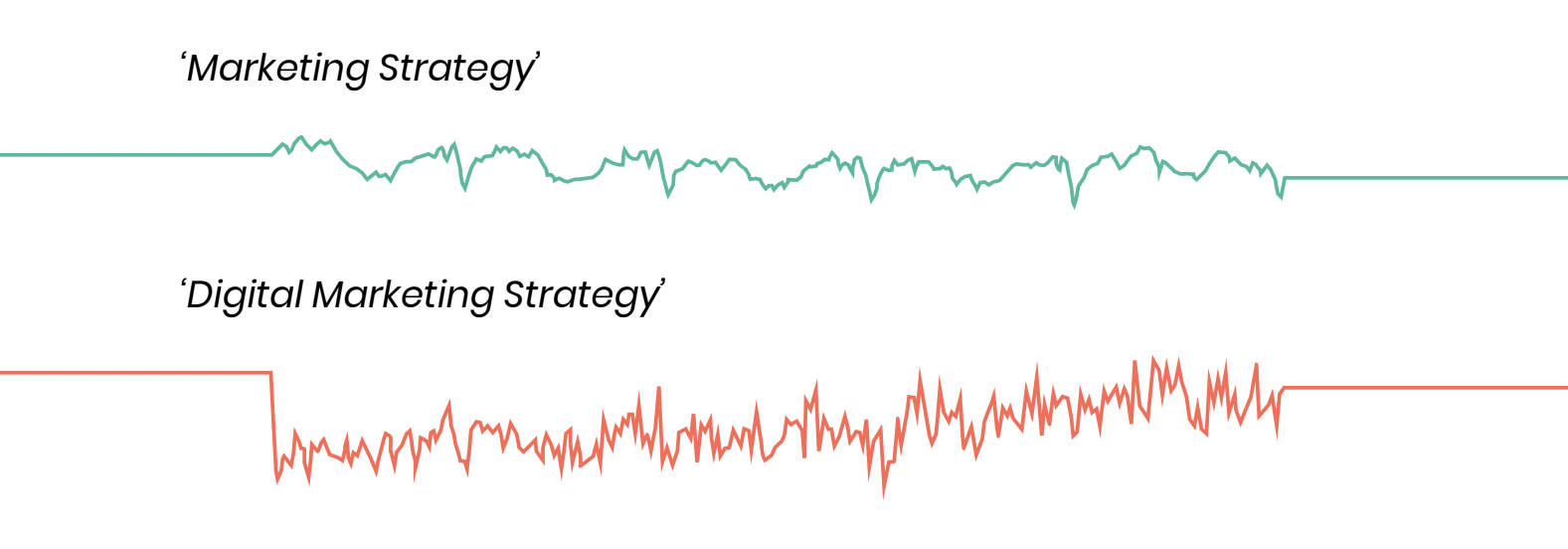
Michael Porter, an influential strategy guru, highlights the difference between a corporate and business strategy, and we will be focusing on a department-level strategy.
You will see another reason why we chose to focus on a Digital Marketing Strategy when you take a look at Google Trends over the last five years, the popularity of the search term ‘marketing strategy’ has decreased.
Whilst the number of searches for ‘digital marketing strategy’ has increased consistently.
Why is strategy so important?
North Star
A strategy is there to ensure a collective direction and focus, which leads to a more effective and efficient process. Without a strategy, our day-to-day tasks will take over and every team member will likely lose direction with their efforts.
All of your activities will become short-term actions, possibly even reactive, leading to a disjointed approach by everyone involved.
There will be many businesses and their departments that have experienced something like this before and find themselves on the back foot.
To resolve this it will mean you have to take some time out from your immediate work pressures and work on a succinct strategy.
So, to ensure synergy across departments and digital marketing activities, we would recommend creating a ‘North Star’ that will guide each activity towards the same goal.
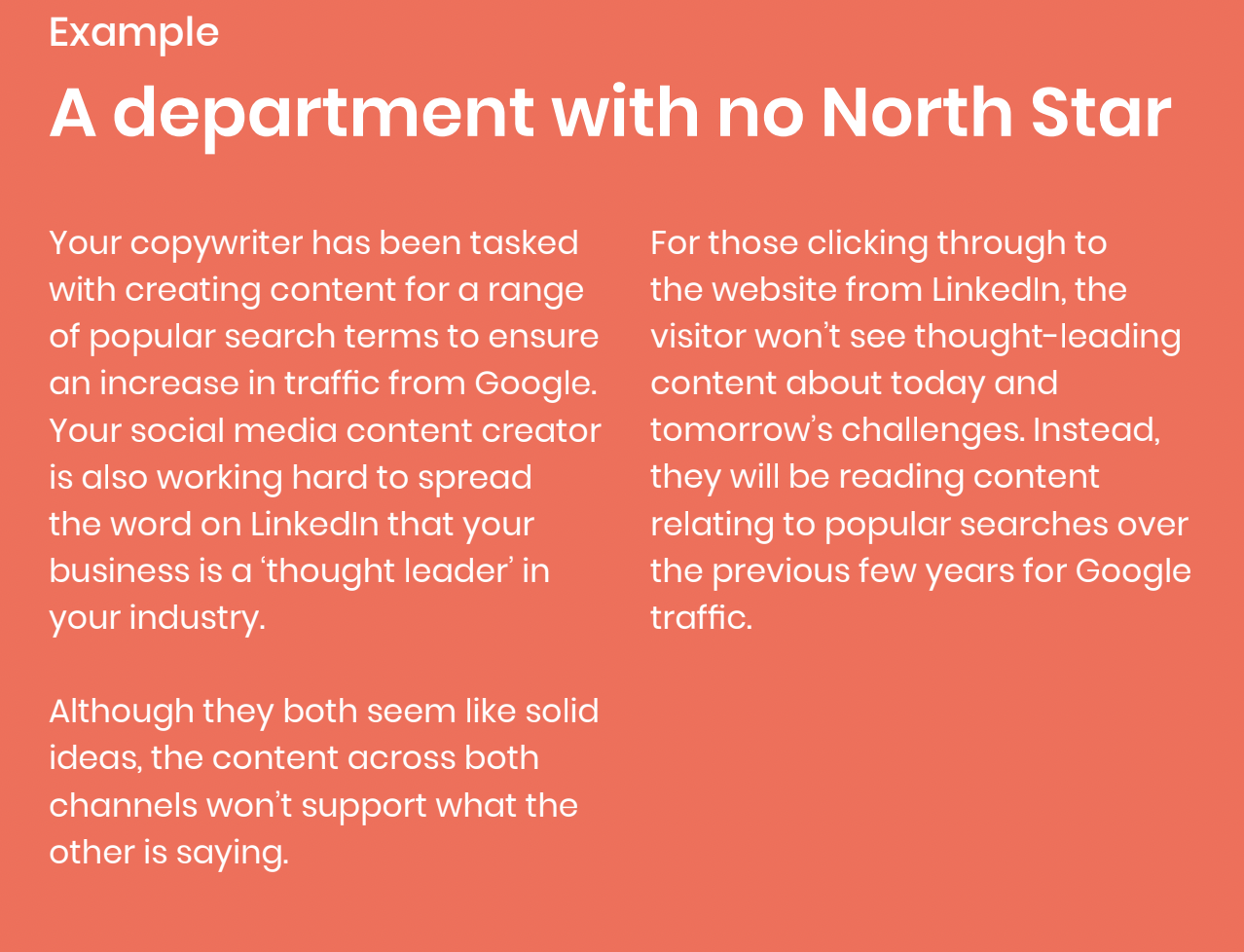 What is success?
What is success?
Without a strategy, you won’t know what the end goal looks like and therefore you would be unable to measure your success or milestones along the way.
Value
A good strategy should always be based on a clear value proposition.
If everyone knows this, then very little micromanagement is needed from team leaders.
However, this has to be backed up by a well thought through value chain, both of which we cover on page 25.
Future-Proofing
The whole purpose of a strategy is about thinking ahead to what you might need to accomplish your goal, or what you will need if you do accomplish your goals. This may be extra staff, skills, equipment or just maybe larger premises.
Competition
All that’s needed is a solid analysis of your competitors, which could take as little as a few hours. But if you don’t take some time out to do this, you’ll be missing out on a huge amount of valuable information, which costs you nothing but your time. How will you ever achieve a true competitive advantage if you don’t know your competitors?
The Strategy Profiler study, which included a study of 6k execs, found evidence of faster growth and profitability at companies where their leaders stated they had clearly defined their value to their customers.
What is a Strategy?
It may seem like an easy question to answer, but have you ever considered the dictionary definition of the word ‘strategy’?
“A plan that is intended to achieve a particular purpose” (Oxford Dictionary Definition)
But let’s go into more detail. This is how Ann Latham, an expert in strategic clarity, refers to the method:
The biggest problem with the way organisations think about strategy is they confuse strategy with plans. They aren’t the same thing. Strategic planning is an oxymoron.
So we can understand why you’d be confused. But, we like to think of ‘strategy’ as:
“Determining how to achieve your goals in a set period of time”
Simple, right?
So, let’s start at the beginning. There are a set of strategies specific to each tier of an organisation.
Simply remove the levels that don’t apply to your organisation e.g. Corporate, for SMEs, and possibly function if you are a micro business.
- Corporate
This is an overall strategy relevant for those organisations made up of multiple business units, operating in multiple markets.
It determines how the corporation as a whole supports and enhances the value of the business units within it.
Example – M&S
NOTE: We won’t be covering the corporate tier as this guide is not aimed towards large organisations.
- Business
A ‘business level’ strategy focuses on competing successfully in individual markets, addressing the question, “How do we win in this market?”
This will apply to all businesses; large and small. This strategy needs to be linked to the objectives identified in the corporate-level strategy, for those larger organisations.
Example – M&S Food
3. Function
Having your organisation work together is key to ensuring your corporate and business unit strategies have the best chance of success. Everyone within a business has a contribution to make and will create a real difference to the business. Every function requires a strategy that is specific to them and in line with the strategies outlined above.
The strategy at this level must directly work towards the goals of the business unit and if applicable, the corporate strategies. This is to ensure all levels of strategy support enhance each other to ensure that the organisation is successful.
Example – Marketing
- Operation
Depending on your strategy, you will have various operations under each function. These operations are tactic specific. In this guide, we will be concentrating on the digital marketing department and its various operations within it. These operations will be relevant to any size of business, it’s just in some cases, some operations may be outsourced to agencies and freelancers.
This makes it, in a way, even more important to create and communicate a clear strategy that everyone involved can understand.
Example: SEO, Social Media, Web Dev, Content, Paid Campaigns, etc.
What does a Strategy look like?
The approach we have taken to creating a strategy is based on Richard Rumelt’s ‘kernel’ model, inspired by his book ‘Good Strategy/Bad Strategy’. The reason is that it’s very simple. And simplicity wins every time in our book.
We have renamed the steps to make an easy to remember acronym, DNA.
-
Diagnose
-
Navigate
-
Act
The first step in ensuring an effective strategy is to explore and analyse internal and external factors.
Step 1. Diagnose
Having a clear picture of the business within its marketplace is essential to creating a realistic strategy.
This is where a SWOT analysis comes into play, allowing you to explore both internal and external factors in more detail. We will explore how to create your own SWOT analysis on page 25.
Once you are clear on where you are and what’s ahead of you, both internally and externally, you can get started on the most exciting part of running a business; your goals.
Step 2. Navigate
Once you’ve completed step 1, you can then use this information to create a ‘navigation policy’.
This is an approach used to combat the obstacles highlighted in the diagnosis and channel your output to a particular direction or outcome.
This helps to focus the attention of your teams, giving purpose to your digital marketing activities.
Step 3. Actions
And this section is where we put plans into action.
Without the action, the strategy is just a document, and, on its own, can’t enforce change or development. It will simply be a dream, a fantasy. But, of course, it works both ways. Action without strategy is ineffective.
Actions are where you get your hands dirty and start making real tangible decisions. These decisions, once made, exclude other options, hence the tough nature of this part of the process.
As long as these decisions have the diagnosis and guidance at the heart of them, then you increase the chance of success and mitigate risks.
NOTE: The further you go down the organisation levels, the more granular the actions and the more frequent the reviews.
When?
Strategy Creation
Every organisation is different. Some will align the business strategy with the financial year end ensuring budgets are maintained.
Alternatively, the initial strategy creation might be performed when you set up the business or at a time of year when you have spare time e.g. Christmas for B2B or January for hospitality.
Having said that, most of you will laugh at the idea of ‘spare time’; when do you ever have spare time, hey? But it’s important that you make the time.
It’s also essential that you don’t rush the process and you take the time needed, otherwise, it simply won’t provide the answers or be based on accurate information.
We would recommend updating your business strategy annually for most SMEs.
In some industries, it could be longer e.g. energy companies will have to plan 5-10 years ahead because power plants can’t be created overnight.
It is important to give your strategy the time it needs though and to set milestones, rather than make decisions based on just ‘months 1 and 2’, with the end goal in mind.
Strategy check-in and revisions
We would always suggest strategies are “working” documents and not set in stone. You are constantly learning, and external factors could change everything very quickly.
Having scheduled “check-ins” where you might look to tweak the strategy slightly is a very good idea. These will also be used as a gentle reminder to everyone involved about the purpose of their activities.
The frequency of these check-ins would depend on the organisation level.
You can make up different names for the levels and choose the number depending on what suits your organisation.

The reason why check-ins are more frequent further down the chain is because the actions are more granular.
You can see after a few weeks whether a social paid campaign is working or not.
But, it would take months to see enough data as to whether the changes in the product value proposition and target audience are working.
Typically, the revisions made at these check-in sessions will be to the action section only. Unless, of course, something out of your control happens e.g. Pandemic! to change the validity of your SWOT analysis or guidelines.
For example, your guidelines state that you should focus your campaign on Facebook groups and not go down the paid campaign route. But one month in, Facebook changed its organic reach algorithm and changes its terms to say no promotional posts are allowed in any group. This update may force your hand to change the guidelines.
You can’t allow your strategy to become reactionary, it should be visionary.
Ultimately most SMEs will be checking in on their strategy and performance throughout the year, so it’s important you are able to tweak your course too. These tweaks must only be based on solid data.
Remember strategies as a whole need to be given time, so we would not suggest any major changes within a 6 month period. This is why it’s important to remember, you can’t allow your strategy to become reactionary, it should be visionary.
The scheduling of these plans depends on the business and its immediate external environment.
Who should be involved and know about it?
So, who is involved in the creation of a strategy?
In most cases, it would typically be the leadership team at each level, as well as the key members in charge of implementing the actions.
Ultimately, it is down to the organisational style; some leaders in organisations want to have input from many different people, with different perspectives.
For example, the marketing department may want to send questionnaires to the customer-facing staff, such as the sales team or customer services. This way, marketing can ensure their diagnosis is based on the best possible information, not assumptions, and that their guidance is in line with the sales team.
Who should know about the strategy?
Communication is key when it comes to ensuring the strategy reaches its full potential. Whether you are small or large, there should always be an annual event when the leadership presents the business strategy in an inspiring, rather than detailed, way to everyone within the business. These events could be integrated into your annual get-together, a work trip, a virtual event; basically whatever suits your business.
The priority is to ensure EVERYONE understands the purpose of what they are doing. Otherwise, all your great intentions will go to waste when everyone goes about their tasks in different ways. Not only that, but if your employees understand the greater vision, they may be more motivated and realise the importance of their role.
Outward V Inward
The more open you can be about the strategy and communicate it with your customers, the more engaged they will be. If your strategy is all about internal activities and not of any interest to your customer, then you could be missing the mark.
How?
complete the 3 part Strategy doc
So now we know what a strategy document is, we want to go into a little more detail about how to complete the three parts.
Goals set on assumptions are merely dreams.
Step 1. Diagnosis
This part is always first and typically the part people will try and skip or rush through using their assumptions. It’s all about having a clear understanding of where you are at and what is coming your way as a business.
Only when you have a clear picture of this, can you seriously think about setting goals.
SWOT
It is best to carry out a brutally honest analysis of your current Strengths and Weaknesses. There is no benefit to overselling your good points and sugar-coating the bad.
We have it on good authority from directors in some of the most successful global brands that it is really powerful to engage the organisation at every level. To do qualitative workshops or interviews to gain the perspective of the employees is incredibly valuable.
Not only is it good for learning, but it is also a great way to make the teams feel involved and invested in the strategy, and therefore stands more chance of succeeding when implemented.
Then you have to look externally at what’s happening around you, both now and into the future.
Opportunities could be to do with future changes in technology, society, trends, economics, governmental etc.
Threats could be related to the same issues, however, you should also look at your competitors to see whether they have developed in some way. This could be through investment into new technology, or they could have developed a new product or service to compete more aggressively with yours.
The potential threats from your competitors are endless. Yet we always believe if you were to have a percentage of concentration invested in both perfecting your own value proposition and worrying about your competitors, then 95% should be spent on your own business.
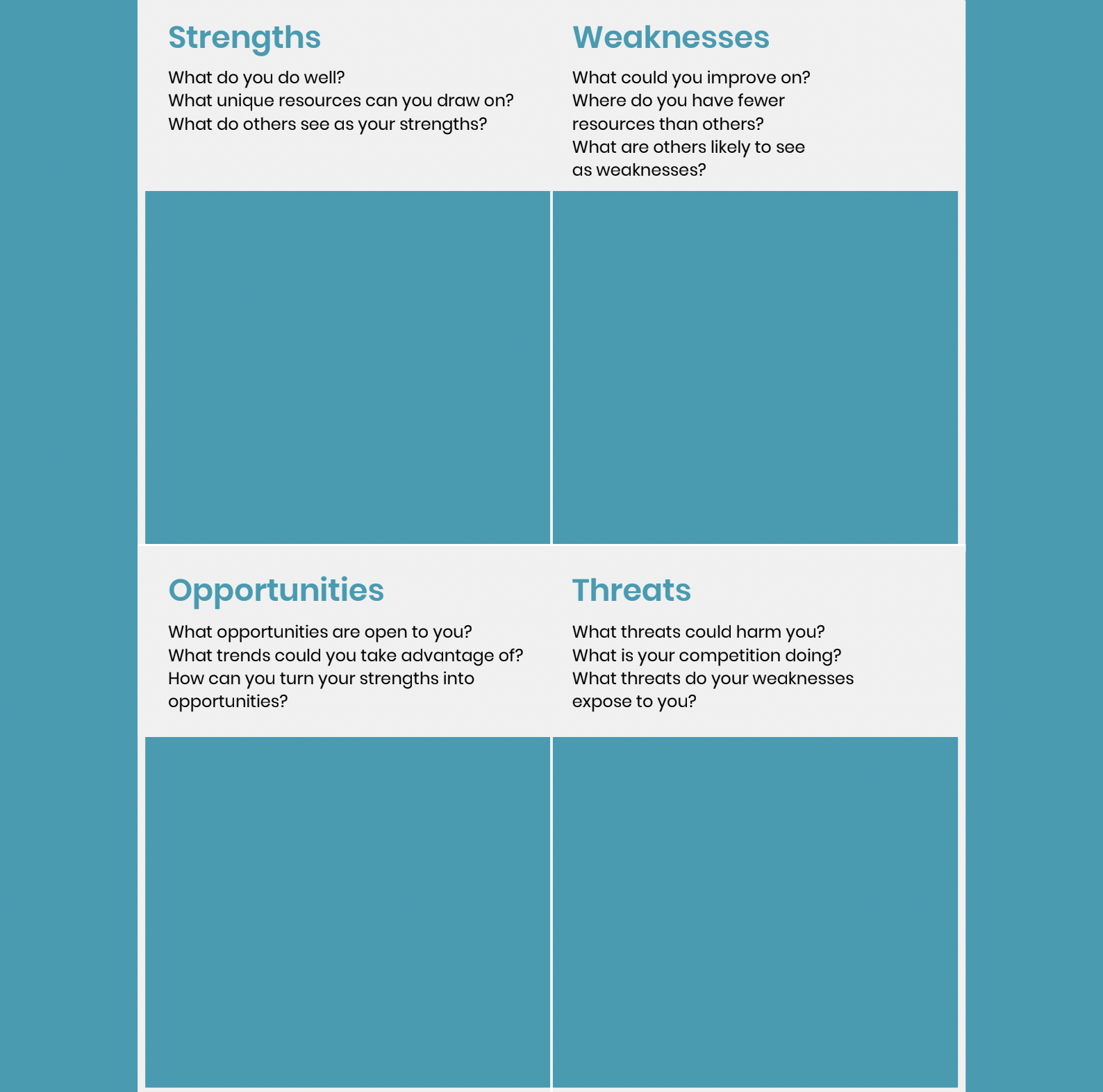
Value Positioning
Another useful process is to understand your current value positioning and your aspirational position in the market.
This is where you have two axes; one for the price point and one for quality or the level of the custom offering your product/ service provides for your target audience.
You will see in the example on page 26 that we have highlighted an area in yellow which we believe is the space you want your business to be in.
Anything closer to the top right of the analysis (customer’s dream), you are definitely leaving profit on the table.
If you are on the opposite side, you might find it harder to convince others to buy or to refer.
You might think, well, IKEA is cheap and has great products, so how are they so successful? Remember, the level of service isn’t as good as the fancy furniture store in the city centre.
So, let’s go through an example; Netflix.
A measly £10 per month for all that content? Ok well, they hit a great value proposition, just like IKEA, but the selection of films isn’t as good as you think. Just like the days back when they sent DVDs, the selection is limited. Amazon has a bunch of films, and Disney has its own offering too.
On the other end of the scale, if you were to think of the best car, you may immediately think of Ferrari, Bentley etc. But would you say they were the best car business? Well, they can’t be because they are owned by the likes of Fiat and VW.
It’s these high-volume, mid-range quality car manufacturers that have positioned themselves perfectly when it comes to value.

Objective and Goal Setting
There are plenty of reasons why goals should be laid out:
- Motivation
- Drive
- Understand what success looks like
- Able to create milestones • Assign budget so you can plan for a positive ROI
Most of you will have heard of the acronym SMART, but there are some ideas we would like to add. Goals should be SMART:
- Specific
- Measurable
- Actionable
- Realistic
- Time-bound
But also….
- Why do you want to achieve this goal? Is it just because everyone is supposed to grow, because your competitor grew by 10% last year because you want to sell the business, so you can buy new premises etc. As a business owner, it is important to understand why, so that your end goal fits the purpose. There’s no point in increasing revenue and not profitability if you are looking to sell soon. This may be a confidential reason or it could be one you can share, which then may inspire everyone involved. It would be better to have an outward-facing message for your goal, such as; Growth allows us to fulfil our brand promise to more people”.
- Also, there are two schools of thought around goals being ‘realistic’. There are many examples where teams and organisations set out crazy goals. As a result, these goals weren’t achieved, however, they did achieve far greater results than the ‘realistic’ alternative. Shoot for the moon, even if you miss you’ll land among the stars. I think they say.
Reporting and Metrics
As the SMART acronym suggests, the goal must be measurable. The reason is that you can track progress. Growth allows us to fulfil our brand promise to more people.
As mentioned previously, you still have scheduled check-ins to ensure you are on track. Which is why reporting is extremely important. Reports should be simple and focus on the agreed KPIs along with an analysis of the data. But it’s important to not be blinded by big colourful reports showing huge, but insignificant, numbers.
For example, your goal may be to increase website traffic from Facebook. Yet, the report is full of huge graphs showing tens of thousands of impressions, reach video views etc, along with an analysis from your social media person/team/agency suggesting how they achieved such great results. But purposely ignoring the elephant in the room of website traffic.
These reports can be as simple as a spreadsheet of numbers for specific KPIs YOU want to see.
Step 2. Navigate
Now that we know what the current situation is, what to be aware of in future and the goals we are looking to achieve, we have to create a guide on how to get there.
The Navigation policy should lay out a clear vision of how you will achieve your goals. Nothing too specific at this point, it should be seen as a direction of travel.
This guide will outline who we are targeting (buyer personas), the product value proposition canvas, the channels that should be used etc, as well as being clear on what not to do.

Customer Centric Strategy
If we take the previous example of IKEA, it’s a perfect example of a brand that knows the customer, they want to serve and, just as importantly, who not to serve.
They saw a growing group of people that desired great simple interior design and didn’t want to pay the high prices offered in your traditional stores. IKEA went about creating a
product based on a clear value proposition and value chain. Remove anything that adds cost to the customer, that the customer would be ok without e.g. less staff.
- You have to build yourself… “that’s ok”.
- You have to go out of town for the shop… “that’s ok”.
- You have to walk around the entire store for a tablecloth… “that’s ok”.
- Without much customer support… “that’s ok.”
Those customer feedback cards stated: ”We want to be able to choose the colour the sofa came in”, well that went in the bin along with every other suggestion that would disrupt the value chain for their ideal customer value proposition.
You must be very clear on who you are serving, their buying habits, likes, dislikes, interests, hobbies, pains and aspirations; more so than any demographics.
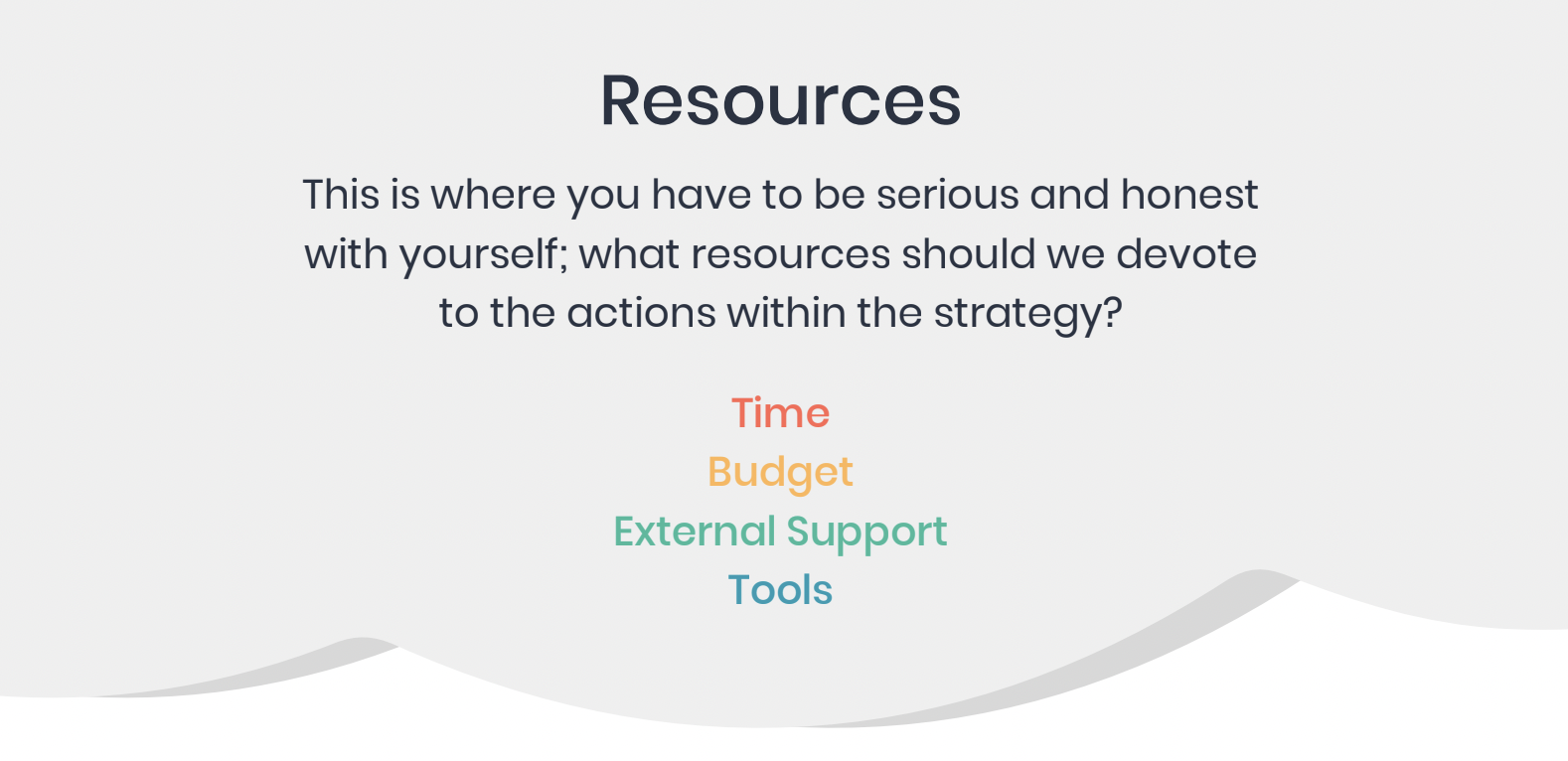
You have to be realistic in terms of how much your business can invest and also how much the strategy will require to succeed.
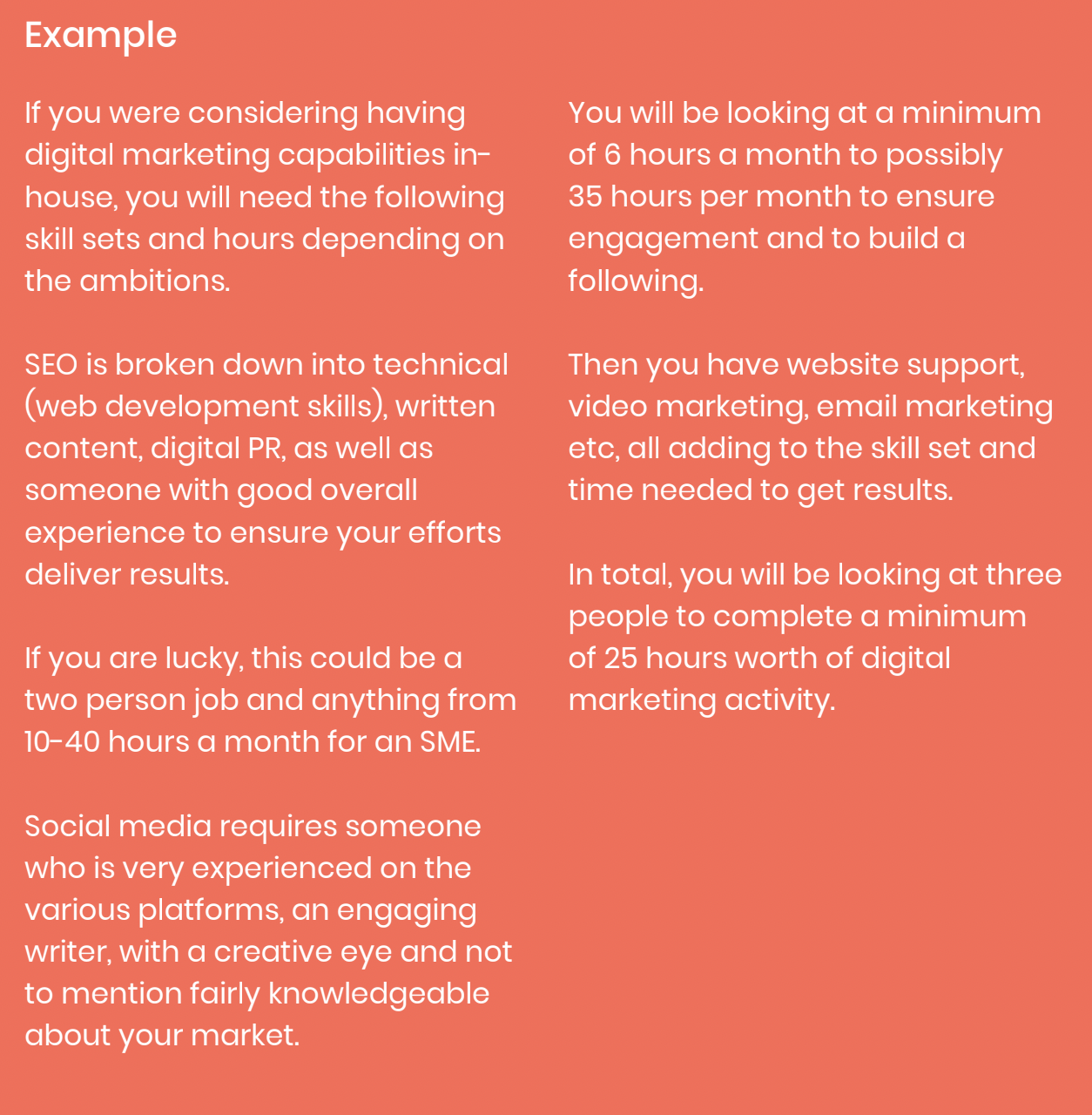
Resources Channels
From your insight into your ideal customer, you will learn, if not understand already, where they ‘hang out’ online. You will know whether your customers search for queries relating to or directly about your product or service via insights from Google Trends, keyword planner.
Depending on what you are selling, emails should be a really cost-effective way of lead nurturing, sale conversion, referrals and increasing the lifetime value of your customer. But remember, state clearly what you do not want to use e.g. influencer marketing, display ads, discount code sites etc.
Content
It should be clear not only what type of content should be created but, in what style. Again, depending on your brand and customer you may choose to create content that is entertaining, over being more informative and serious depending on your target audience. It may be because of the budget that you can’t afford to produce lots of high quality videos, but instead, you can opt for shorter, more informative clips for socials.
The more guidance you can add here, the more chance the actions will be completed in a way that is coherent and supports each other’s efforts.
More importantly, the customer will have a clear perception of your brand.
Step 3. Activities
This is the more tactical part of the strategy, ensuring all the various activities complement one another. These activities could be across different people, teams and, of course, across different channels.
You can also use this part to outline governance of the strategy e.g. who will be responsible for what, who are the contacts, what will be measured and when will they be reported on.
Activities for a Digital Marketing team
This is showing the actions for one campaign of activities within your digital marketing strategy.
Depending on your resources you may have more than one.
SEO
- Research
Research search terms around a certain need of our chosen buyer persona, relay to the digital marketing manager and agree on terms to optimise for in Q1.
- Optimise
Optimise the chosen content and increase relevant internal links to the chosen pages. Tweak metadata, add rich snippets and a table of content to the chosen pages.
Content
- Research
Competitor pages for the chosen search terms.
- Create
Content to compete with the chosen search terms
Designer
- Create
Engaging banners and illustrations for content and for social media.
Link building
- Research
Where competitors’ content gets their links from, as well as other relevant and popular websites.
- Outreach
Contact web publishers with an offer to collaborate resulting in a piece of content on their site with a backlink.
Social Media
- Post
The content on all relevant profiles
- Share
The content within relevant social media groups
Paid campaign
- Boost
The posts and target the target buyer persona – budget e.g. £200pm
- Retargeting
More sales-orientated posts to those that have visited the website content – Budget e.g. £100
Web developer
Create a CTA on the website content pages to entice visitors to give up their details. e.g submit an email for a free demo or 10% off your first order.
Reporting
KPIs
- Social post reach
- Social post engagement 3. Social traffic to the web content
- Organic traffic to the web content
- Referral traffic to the content 6. Page views
- Conversions
- Paid traffic and conversions
Scheduled Check-in
- Social post reach
- Social post engagement
Team Leader and sign-off contact
1. Digital Marketing Manager You will see that each and every activity is supporting another within the Strategy campaign and giving it every chance to succeed.
Summary
Each member of your team will be working over 200 days a year for your business. So we’re sure you can see why it’s worth investing just a few days in creating and communicating a strategy to guide them.
And, don’t forget, 200 days is an awful lot of time to do good, or potentially harm, your brand.
The strategy is there to maximise the good and minimise the risk that everyone can do, both individually and as a whole.
Key Takeaways
3 parts to a strategy
For every level of the business, create a strategy document with each of the three parts in detail and in line with the strategies above in the organisation:
- Diagnose
- Navigate
- Act
When
There is no better time than now to create a strategy, but there could be more appropriate times for your organisation:
- End of fiscal year
- Seasonal close down e.g Christmas manufacturing
It’s important to schedule sufficient time to check in and potentially tweak your strategy; as we’ve said, it’s a ‘working document’ not a fixed one.
The lower down the levels, you may look to do this monthly, but at a business level, you should be looking between 3-6 months.
Who
During the process, you need to be sure to include all those that can add value and insight. The strategy will be far more effective with real, first-hand experience rather than just assumptions and data. Once completed be sure to convey the vision to all of those within the business.
Just imagine the opening scene of ‘Gladiator’, where Maximus inspires his men to go into battle. He didn’t discuss tactics at that point, he sold the dream.
Levels of strategy
Any business should have at least two levels of strategy:
- Business level – an overriding vision for the business.
- Function – digital marketing, SEO, customer services, sales etc.
If your organisation is larger then add levels, from operations to corporate.
Ultimately
A marketing strategy is about understanding how to be truly unique and differentiate yourself in the market.
This gives the ultimate competitive advantage, you can only do this once you are customer-centric in your approach.
We hope this guide helps you on your journey to success. If you would like to know more about how our Digital Marketing Agency can help, you can find out more here.
- Marketing Managers Can’t Be Your Marketing Department - January 11, 2025
- Tagging Strategies: How They Maximise Your Marketing Campaigns - January 7, 2025
- First Step to Creating Killer Content – Know Your Reader! - January 7, 2025

